Sago starch is produced from several species of palm, but mainly from the ‘True sago palm’ (Metroxylon sagu), which originated on the islands of Maluku and New Guinea. Now it is found cultivated in equatorial regions around the world. It is still a major food source in some communities, especially in Papua, Maluku and Sulawesi, and was even more important in the times before rice cultivation arrived in Indonesia. Sago (called ‘sagu’ in Indonesia) is very high in carbohydrates (about 94%), but low in protein and mineral content.
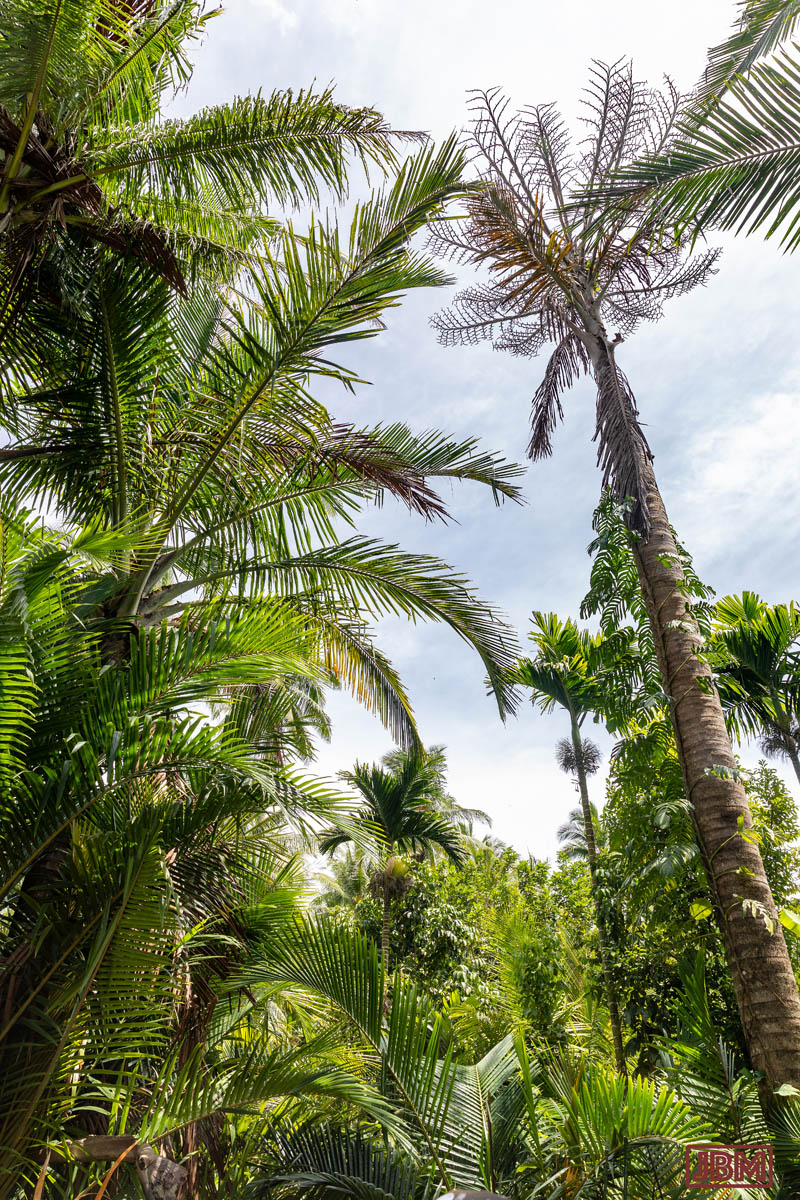
The sago palm thrives in swampy locations, and tolerates soil conditions (poor nutrients, heavy clays, high concentrations of metallic elements) that would kill other plants. It grows to 15 metres high, and spreads by suckering. It doesn’t branch, and after about 12 years a mature sago palm stem will produce one large umbrella-like flower head, and the entire stem dies off after fruit has matured. The starch content of the sago palm is highest just before the flowers open – so this is when the stem is cut down and harvested.
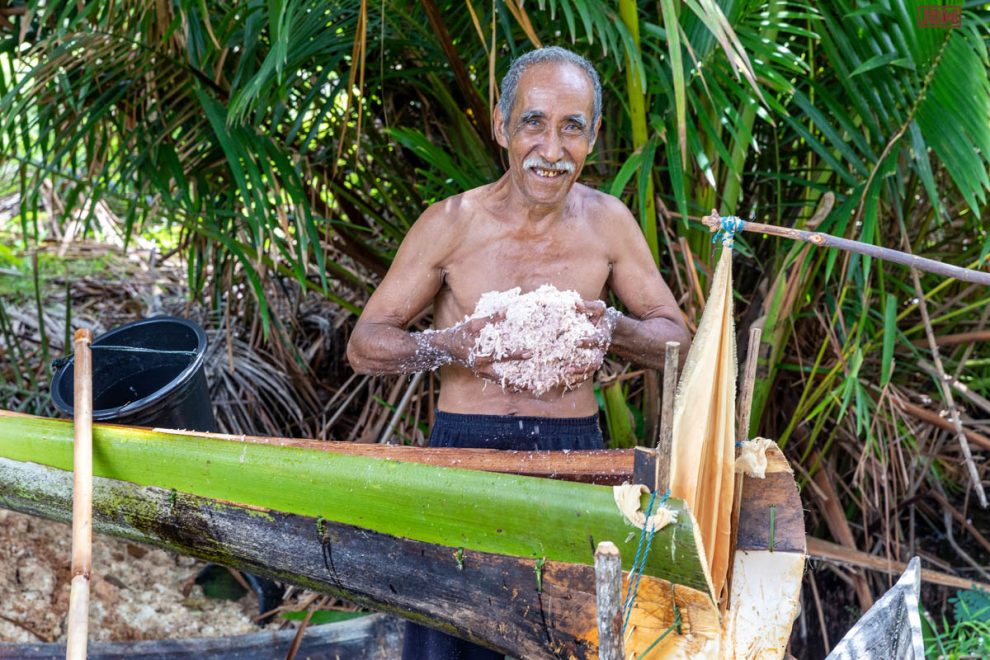
Back in April we were fortunate to chance upon some men harvesting sago. They were more than happy to demonstrate the process of production – and to be photographed while doing so.
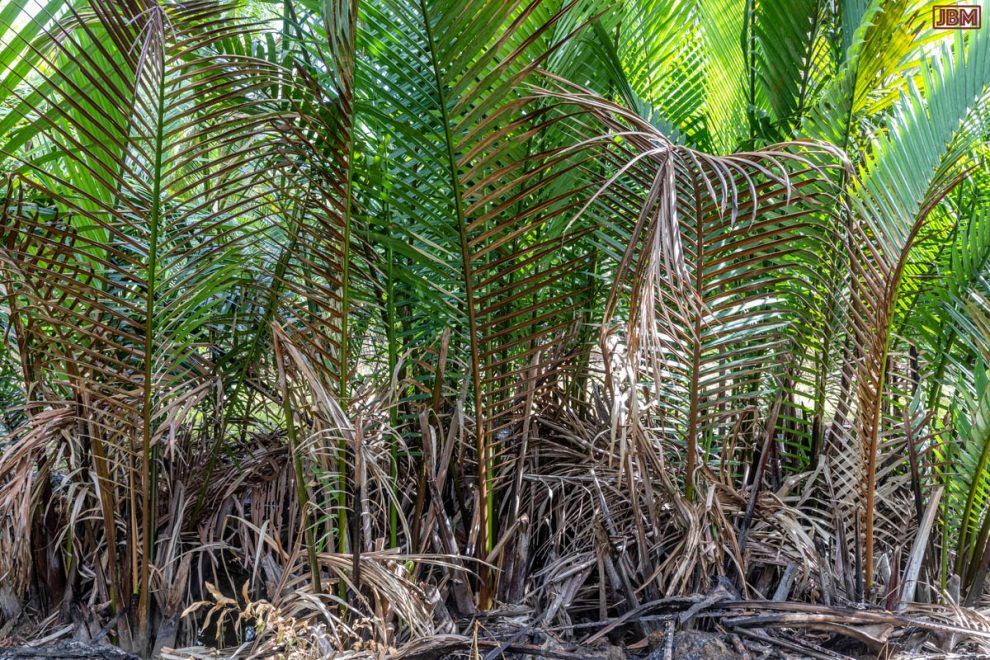
Sago palms are widespread on the Moluccan island of Halmahera.
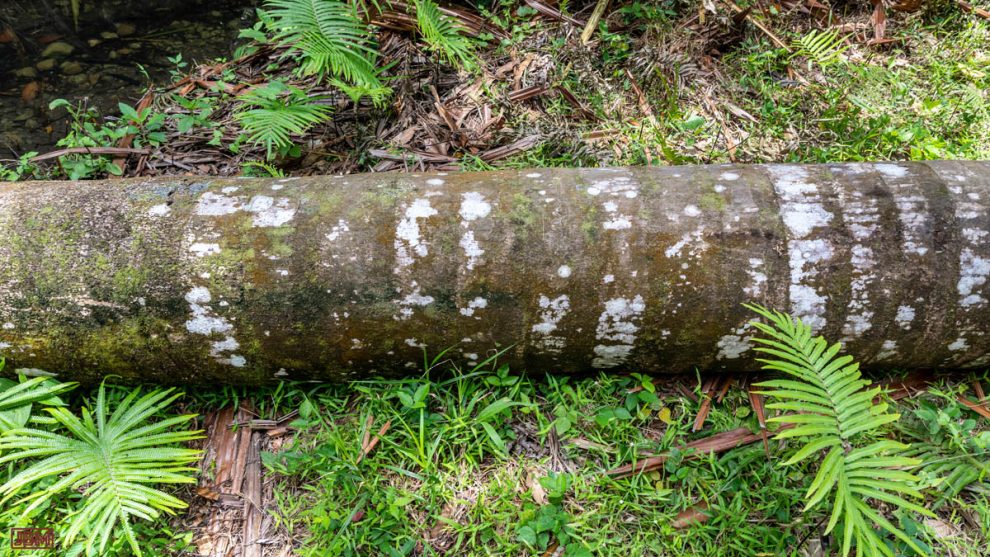
The tall sago trunk, 30-40cm in diameter, is chopped down, cut into lengths and laid flat on an open area of ground.
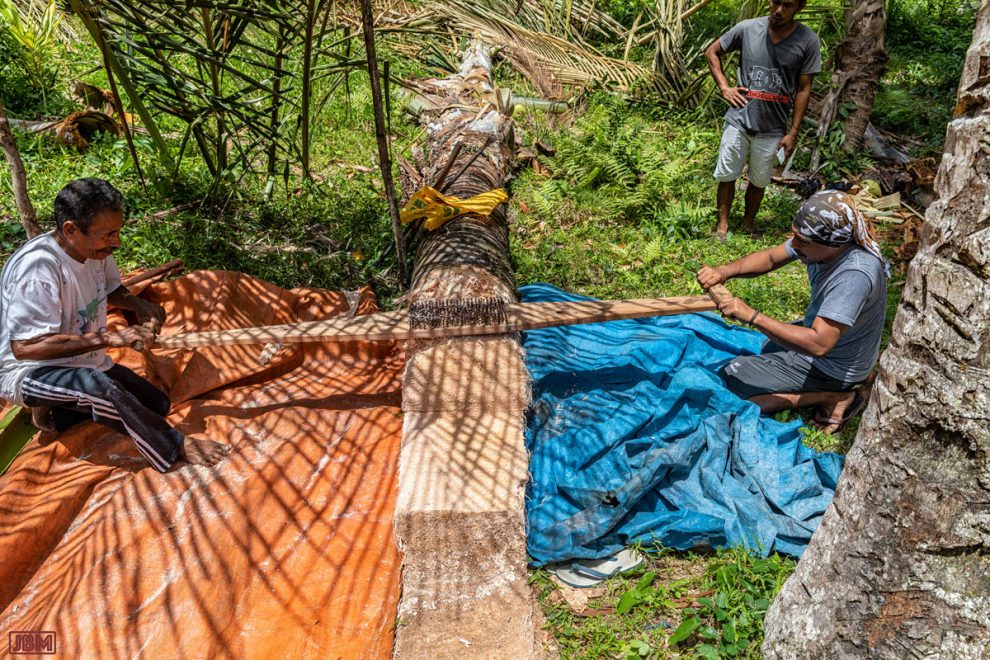
Two men rasp the truck to break down the pith into coarse crumbs, pushing backwards and forwards with a 2m plank through which a large number heavy nails have been hammered.
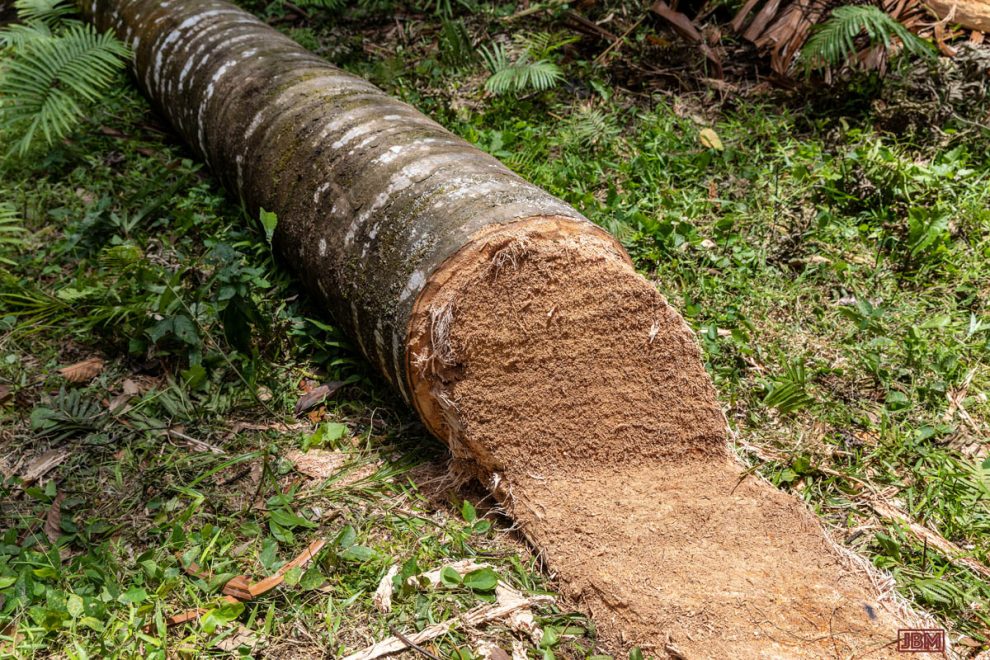
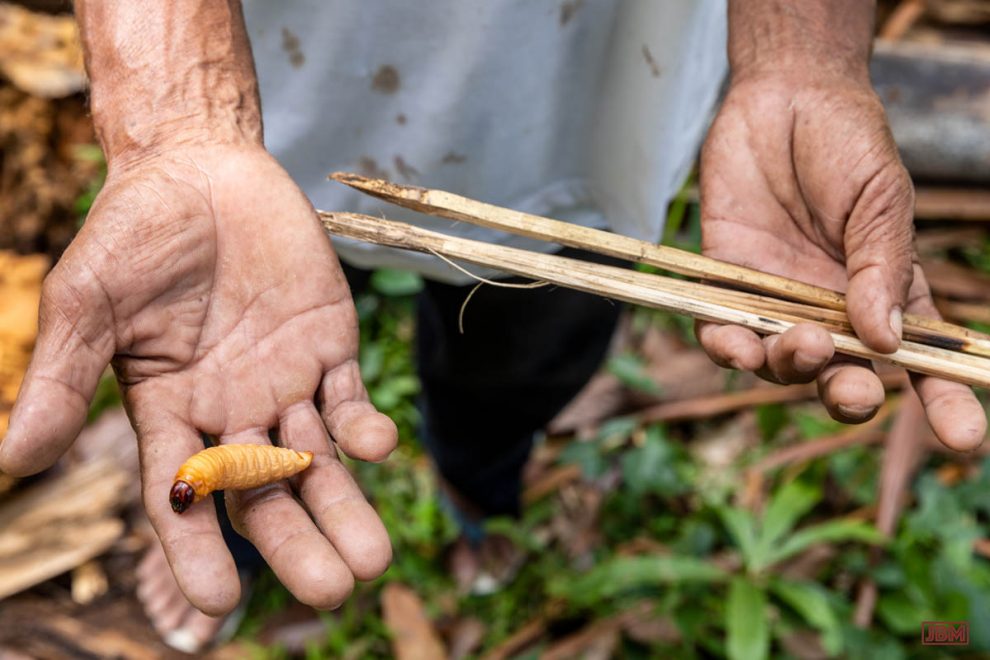
During this stage they may also find that red palm weevils (Rhynchophorus ferrugineus) have bored into the trunk. These are larvae of a variety of ‘snout beetle’, which is regarded as a major pest in plantations of coconut, oil palm and dates.
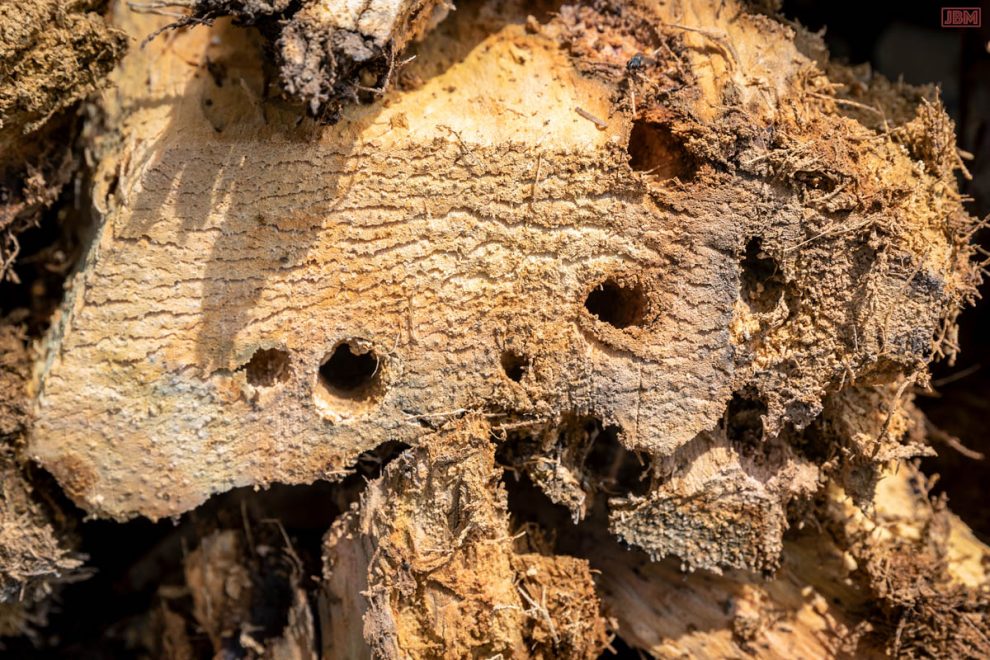
However in Halmahera these 2-4cm long grubs are prized as a delicacy, and they are carefully extracted from the holes they have drilled into the trunk, and put aside for later consumption.
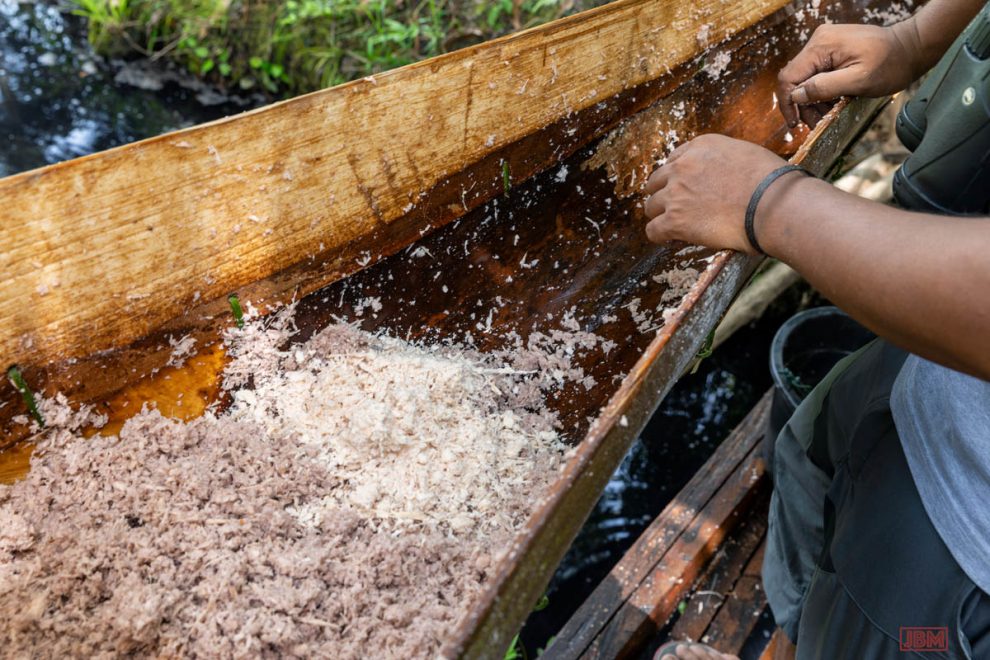
The ground pith from the trunk is transferred in batches into a long tub, which has itself been formed out of a large palm frond.
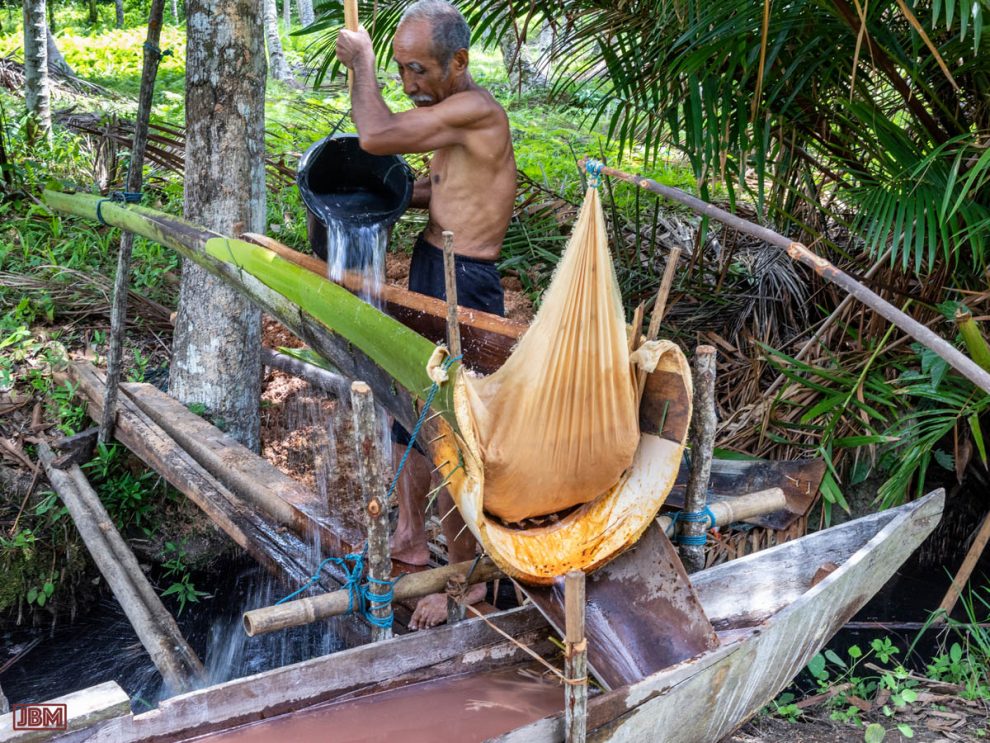
Water is bucketed into the tub, and the mixture is vigorously kneaded and squeezed to extract a solution of starch from the fibrous material of the trunk.
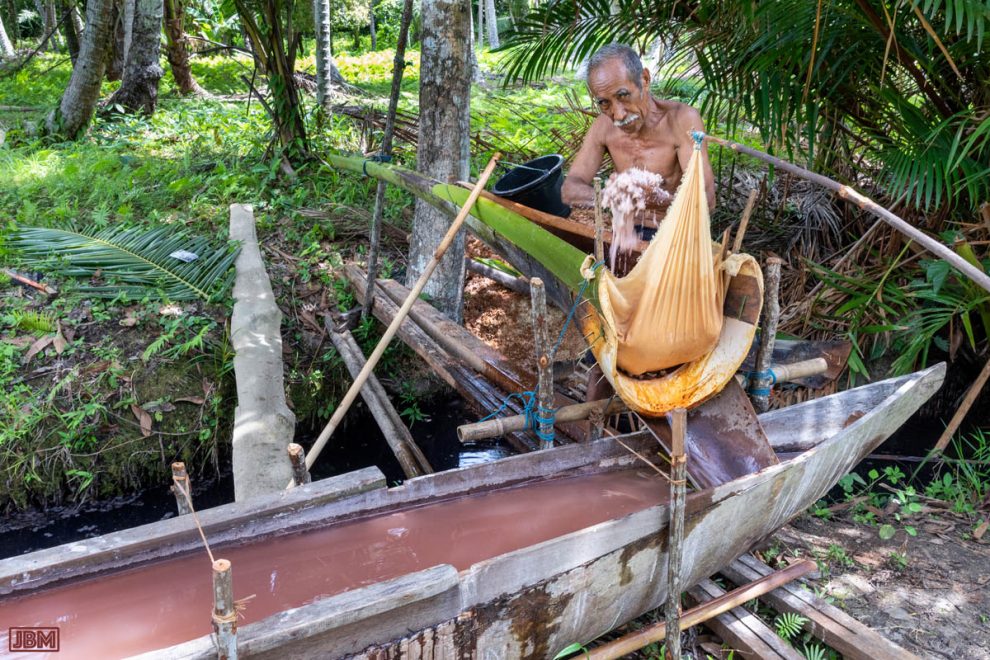
The tub is raised at one end, and the starchy liquid runs out the other end, filtered through a coarse cloth which removes any remaining fibres.
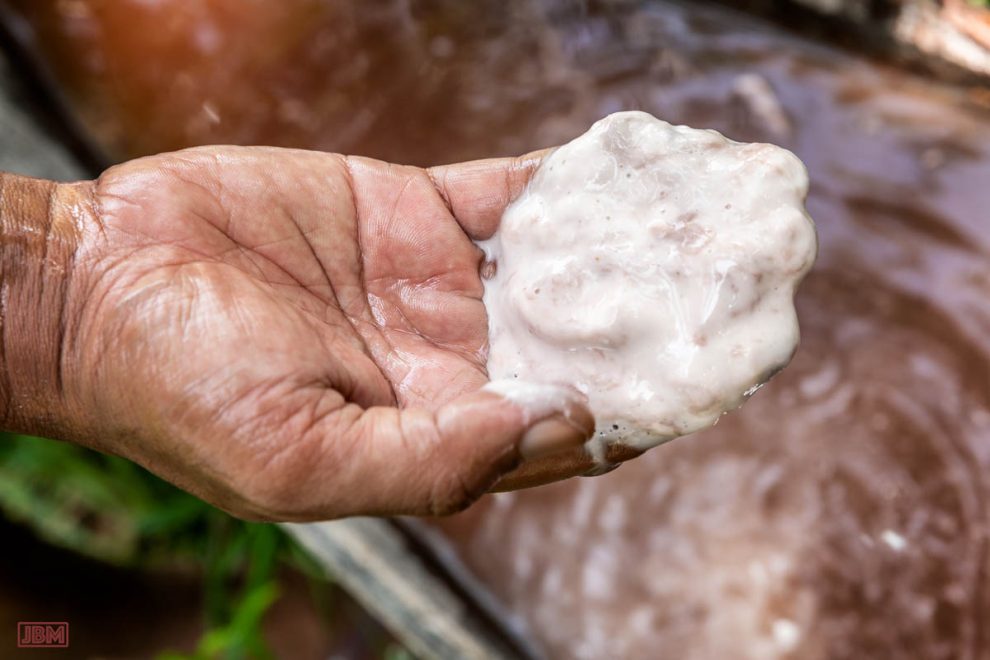
This solution falls into a large settling tub (which was made out of an old canoe!), where it is left for a time for the heavier sago starch to sediment down to the bottom. The water is drained off the top, and paste of starch is removed and dried ready for use.
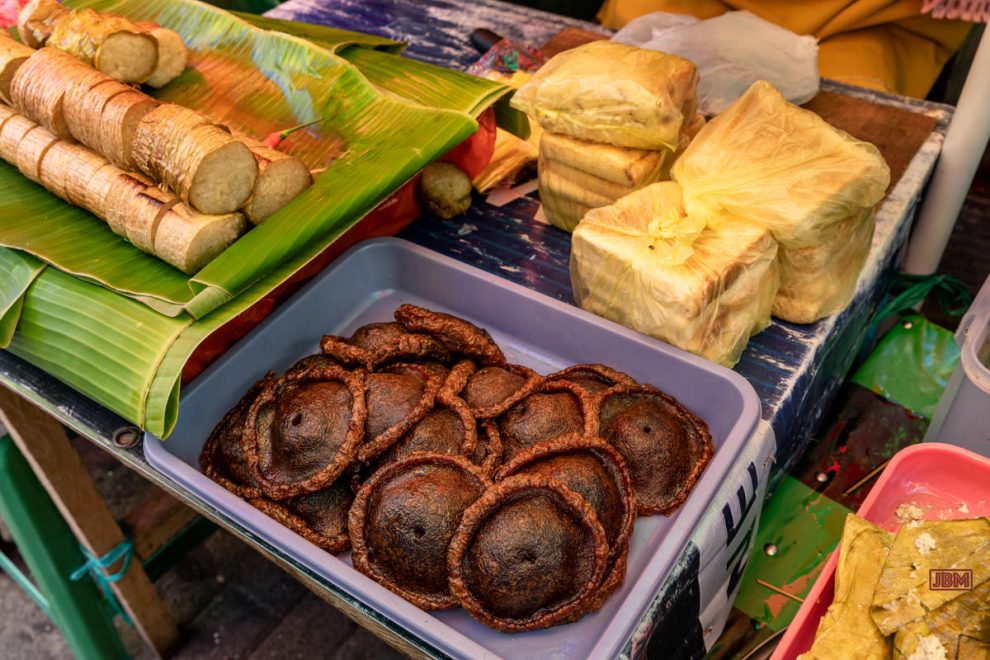
Sago may be ‘pearled’ to produce the familiar little sago beads. But on Halmahera it is mostly baked in a clay ‘forna’ to produce a long-lasting bread called ‘sagu lempeng’, or little hard cakes known as ‘bagea’. Also, in something of a regional speciality, sago flour is boiled to make a clear gelatinous porridge known as ‘papeda’. The papeda has little flavour of its own, and so is usually eaten in a soup along with fish, sambal and vegetables.
